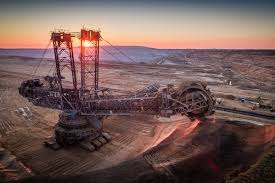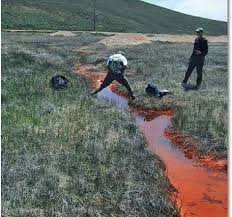The social impacts of large-scale mining projects are controversial and complex. Mineral development can create wealth, but it can also cause considerable disruption.
Mining projects may create jobs, roads, schools, and increase the demands of goods and services in remote and impoverished areas, but the benefits and costs may be unevenly shared.
If communities feel they are being unfairly treated or inadequately compensated, mining projects can lead to social tension and violent conflict.
Communities feel particularly vulnerable when linkages with authorities and other sectors of the economy are weak, or when environmental impacts of mining (soil, air, and water pollution) affect the subsistence and livelihood of local people.
Power differentials can leave a sense of helplessness when communities confront the potential for change induced by large and powerful companies.
The displacement of settled communities is a significant cause of resentment and conflict associated with large-scale mineral development.
Entire communities may be uprooted and forced to shift elsewhere, often into purpose-built settlements not necessarily of their own choosing. Besides losing their homes, communities may also lose their land, and thus their livelihoods.
Community institutions and power relations may also be disrupted. Displaced communities are often settled in areas without adequate resources or are left near the mine, where they may bear the brunt of pollution and contamination.
Forced resettlement can be particularly disastrous for indigenous communities who have strong cultural and spiritual ties to the lands of their ancestors and who may find it difficult to survive when these are broken.
When mining activities are not adequately managed, the result is degraded soils, water, biodiversity, and forest resources, which are critical to the subsistence of local people’s livelihoods.
When contamination is not controlled, the cost of the contamination is transferred to other economic activities, such as agriculture and fishing.
The situation is made worse when mining activities take place in areas inhabited by populations historically marginalized, discriminated against, or excluded.
Mining projects often underestimate the potential health risks of mining activities. Hazardous substances and wastes in water, air, and soil can have serious, negative impacts on public health.
Read Also: Ecological Consequences of Management of Natural Resources

Because of the quantity, concentration, or physical, chemical or infectious characteristics, hazardous substances may cause or contribute to an increase of mortality or an increase in serious irreversible or incapacitating illness, pose a substantial present or potential hazard to human health or the environment when improperly treated, stored, transported, disposed of, or otherwise managed.
Frequent public health problems related to mining activities include surface and ground water contamination with metals and elements; microbiological contamination from sewage and wastes in campsites and mine worker residential areas, exposure to high concentrations of sulfur dioxide, particulate matter, heavy metals, including lead, mercury and cadmium and deposition of toxic elements from air emissions.
Mining activities can suddenly affect quality of life and the physical, mental, and social well-being of local communities.
Improvised mining towns and camps often threaten food availability and safety, increasing the risk of malnourishment. Indirect effects of mining on public health can include increased incidence of tuberculosis, asthma, chronic bronchitis, and gastrointestinal diseases.
Mining activities can cause direct and indirect impacts to cultural resources. Direct impacts can result from construction and other mining activities. Indirect impacts can result from soil erosion and increased accessibility to current or proposed mining sites.
Mining projects can affect sacred landscapes, historical infrastructures, and natural landmarks.
Potential impacts include complete destruction of the resource through surface disturbance or excavation, degradation or destruction due to topographic or hydrological pattern changes, or from soil movement (removal, erosion, sedimentation); unauthorized removal of artifacts or vandalism as a result of increased access to previously inaccessible areas and visual impacts due to clearing of vegetation, large excavations, dust, and the presence of large-scale equipment, and vehicles.
Read Also: United Nation REDD- Plus Initiative to Combating Deforestation

